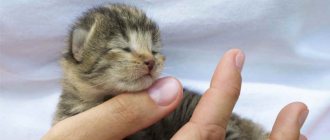Dog and cat lovers often argue about which animal is “smarter.” Dog owners usually argue that dogs are trainable and have the ability to understand and follow commands, while cat owners argue that their pets are too smart to act on command. In fact, these types of pet comparison methods are like comparing apples and oranges in the animal kingdom. Dogs are “service” animals, motivated by a strong need to follow and please the “best” dog of the pack (or human owner) in order to receive praise. A lonely cat answers to no one and is motivated by the need to survive. And although the cat's ability to learn and be trained is a cat's strength, it certainly has intelligence and the ability to adapt. This incredibly resourceful and self-sufficient species has survived for thousands of years in very difficult and variable conditions. Even domestic cats will show a cunning, strong-willed and versatile character when necessary.
Many of the cat's remarkable mental and physical abilities are dismissed as simply instinctive. However, just as humans are born with innate communication skills but take time to master language, cats improve many of their innate abilities through practice. The widely held belief that they learn through observation and imitation of their mother or other cats is now being questioned. Cats learn, but not in the same way as humans or dogs; they have a special kind of intelligence.
Once experience is gained, even by accident or trial and error, most of the knowledge is retained for life thanks to the cat's excellent memory. Even hunting techniques buried under years of neglect in the brain of a well-fed domestic cat will be easily recalled if the cat for some reason has to fend for itself. When frightened, a cat will retain very strong memories of any incident that it perceives as threatening. For example, one face-to-face encounter with a growling dog is enough to convince a cat that all types of dogs are best avoided forever. However, positive experiences are also easily retained and recalled, especially if they involve food or play.
Any cat owner knows that indoor cats respond well to familiar sounds, such as doors opening, bags of dry food rustling, or the noise of a favorite toy. Many of them also have the uncanny ability to recognize their usual breakfast time, waking their owner if he or she tries to sleep longer.
When should you start parenting?
Veterinarians and trainers unanimously agree that raising a kitten should begin as early as possible. Children under the age of six months are best suited for learning and development. It is this time that should be devoted to the development of the baby, instilling in him certain behavioral skills. If time is lost, re-educating a teenage kitten will be much more difficult.
Despite the fact that you really want to pamper your baby, you need to explain to him from a very early age what he can and cannot do. Already a three-month-old kitten should know where its toilet and toys are located. Understand that damaging furniture, sharpening claws on walls, scratching and biting is strictly prohibited.
However, you should use the right tactics. Physical punishment and loud screams will make the kitten nervous, embittered, and intimidated. In addition, many cats to whom such measures are applied begin to take revenge on their owners.
The best method of raising a kitten is to prevent unwanted behavior. However, what to do if the offense has already been committed? For educational purposes, clapping your hands loudly or sprinkling the baby with water will be enough. If you repeat these actions regularly, the baby will clearly understand what he should not do and will not receive psycho-emotional trauma.
You should accustom your pet to order by strictly observing its regime and daily routine. The kitten must have its own sleeping place, toilet, and place for feeding. It is recommended to give food to the baby at certain hours, at the same time. At the same time, it is important for the owner not to violate the rules he himself has established. For example, if one time the owner punished the child for an offense, and another time he ignored his action, the educational moment will be missed.
If the owner accustoms the animal to eat in a strictly defined place, then under no circumstances should you feed it from the table, etc. Proper upbringing of a kitten is based not on severity and cruelty, but on maintaining order and discipline.
scratching post
Sharpening claws is not a whim, but a necessity. In the process, the cat manages to relax, hone its skills in retracting and releasing the plates, and also remove excess layers of tissue. If your pet does not have a scratching post, he will begin to damage furniture and walls.
The main mistake owners make when training is choosing the wrong scratching post. It should match the pet's preferences. Observe your ward: some companions like vertical surfaces, others like horizontal ones, and others like inclined plates. Large cats need fairly high posts. Some animals prefer special furniture pads.
If a bad habit has already taken hold, you can cover the kitten’s favorite surfaces with foil to make them less attractive; personal presence is required as the pet may swallow the packaging
In order for the kitten to understand what he needs to do, you should carefully take him by the front paws and place them on the scratching post. Most often this is enough. If your baby has a negative attitude towards touch, you can show him a personal example and scratch your fingers on the surface. Spray is allowed.
Education of personal qualities
Most people who get a cat dream of it being affectionate and tame. But few people know that the character of an animal is also formed at a young age and depends on upbringing.
If the owner wants to raise a kitten to be tame and kind, then it is necessary to try to devote enough time to him, not to leave him alone for a long time, to take the baby in his arms more often, to play and talk to him. Scientists have proven that cats, although they do not understand words, receive certain information from a person’s tone and intonation.
Place to sleep
The cat must have its own territory. It allows the animal to feel safe and relieves stress associated with excessive attention from the owners. The best option is a spacious cage. It may well not be a prison, but a big house, if you gently accustom your pet to it. This needs to be done gradually and from childhood. You cannot force a kitten to be locked in a cage, otherwise negative associations will appear. The advantages of such a house are obvious: you can leave your pet in it without fear for repairs and the life of the baby.
Everyone has to decide for themselves whether to let a kitten on the bed; if the animal does not walk outside, it is relatively safe, but you will have to put up with the pet’s shedding
Most often, kittens do not have to be accustomed to standard houses, beds and play trees. Animals like such shelters, so they occupy them on their own. It is important to choose a house that the kitten will like. Some pets prefer to watch what is happening from above, while others require a confined space. If the kitten does not want to relax in the house, you need to move toys there to attract the baby’s attention. You can use a special spray.
How to train a kitten to sleep
When purchasing a kitten, it is recommended to take care of a comfortable sleeping place for it. Experts do not recommend that owners allow their cat to sleep in the same bed with them. Not only is this unhygienic, but also in the understanding of the animal, by sharing a sleeping place with it, the owner seems to equalize positions, and the owner must still be the clear leader.
In addition, sleeping with a kitten is simply dangerous. For example, you can accidentally crush a baby, causing him serious injuries. There are cases where cats scratched people in their sleep. If claws accidentally get into the eye, the most tragic consequences are possible, including complete blindness.
It is necessary to equip the kitten with a comfortable sleeping place, suitable in size, protected from noise and drafts. Often babies do not want to sleep alone and come to bed with their owners. In this case, you should calm the kitten down and then take it to its own sleeping place.
In this matter, you should be gentle, but at the same time firmly adhere to your positions. Once you let the kitten fall asleep in bed with its owner, the process of further accustoming it to a sleeping place will be extremely difficult and can take a long time.
If you need to re-educate
It is more difficult to re-educate an animal with an already formed character, but it is also quite possible. First of all, you need to understand why exactly the cat is behaving badly.
A pet may act out because at one time he was indulged too much or was not given attention. In this case, use the same strategy as in raising a kitten: reward correct behavior and scold for unacceptable behavior. Sprays containing unpleasant odors for cats, such as citrus fruits, will help scare your pet away from places where they are not allowed.
An animal may be intimidated or aggressive if it has been abused by previous owners. In this case, you need to behave towards the pet as gently as possible and reduce punishment to a minimum. As with a kitten, avoid stress such as noisy guests or loud music. In difficult cases, it makes sense to contact a zoopsychologist.
Related article: Why does a cat constantly meow for no reason?
Sometimes an animal can behave correctly in the presence of its owners, but spoil things when alone. This may be a consequence of ordinary boredom or protest if the animal does not have enough attention. In this case, it is worth purchasing more toys for your pet. If necessary, the cat can be locked in one of the rooms (you need to put a tray and water there). Sometimes the solution may be to purchase a second kitten.
Please note that a sudden change in behavior may indicate an illness in the animal. When raising a kitten, combine persistence and affection. Remember, your goal is to achieve mutual understanding with your pet, not to force him to obey.
Recommended Posts
Standard height and weight of the Cane Corso breed by month
Weight of a puppy and an adult Labrador by month
Weight and height of a German Shepherd puppy by month
Description and content of the hunting border terrier
Description and care of the highly intelligent Border Collie breed
Description of forms and features of treatment of enteritis in cats
Toilet training
It is necessary to accustom a kitten to the tray from the moment it arrives in the house. It is recommended to choose a comfortable tray and high-quality filler for the animal. So that your baby can figure out where to go to the toilet, you just need to take him there after eating or when he exhibits restless behavior.
In the event that the kitten nevertheless did his “tricks” in the wrong place, you should refrain from shouting at the baby, much less hitting him. You just need to carefully poke his muzzle into the puddle, explain that you can’t do that and take him to the potty. You can also blot the cat’s urine with a cloth and place it in the tray; the smell will help the baby figure out where exactly his litter box is located.
Often the fault that a cat goes to the toilet in the wrong places lies with the owners themselves. It should be remembered that these animals are very clean. Therefore, it is worth regularly checking the condition of the tray, washing it and changing the filler.
Text of the book “How to Raise Your Cat”
Sarah Ellis, John Bradshaw How to Raise Your Cat
John Bradshaw, Sarah Ellis
THE TRAINABLE CAT
© John Bradshaw, Sarah Ellis, 2015
© Translation. A. Sokolov, 2017
© Russian edition AST Publishers, 2018
* * *
Dedicated to Herbie, Sarah’s favorite cat
As we were writing the final chapters of this book, my beloved cat Herbie unexpectedly died. I want to dedicate this book to him because without his inspiring support I would not have had the strength, knowledge or experience to complete our work. May his legacy help cat owners train their pets, cope with challenges, and even enjoy the troubles that come with being together.
Herbie...your paw print is forever imprinted on my heart.
Herbie is a special cat in many ways. Here he is enjoying Sarah tickling his armpits
Foreword by Sarah
Cat training is something special to me. Looking back at the moment when I first started doing this - by my calculations, I was about seven years old at the time - I must admit that I had no idea what impact it would have on my life and on the lives of my future cats. My mother bought me a Burmese kitten, which became the focus of all my interests: I diligently sketched out sketches of badges for the Brownies animal lovers club, submitted all kinds of pictures to various competitions, constantly talked about him with my school friends, and that’s just there are few that I can list right now. Claude, as the kitten was named, was very affectionate, active and loved to eat - a successful combination of character traits for training. He readily jumped over obstacles made of furniture, attracted by a tasty morsel, or excitedly chased after a toy that I dragged with incredible speed through the barriers built in the garden from my mother’s clothes dryers. I was most proud of our signature performance: I tapped myself on the shoulder twice, and he jumped there from the back of the sofa, and I carefully carried him across the living room to the windowsill. Another double pat, this time on the cat, and he clung to me, rubbing his muzzle against my face. He responded to my love with love, slept with me or in a doll's crib and often accompanied me while walking the dog. I lost Claude on my twenty-sixth birthday. The cat reached the respectable age of nineteen and influenced me so much that by that time I was already halfway through writing my dissertation on the topic “Cat Behavior.”
My research and practical work with cats has given me close insight into the concerns of pet owners today. I have found that very few cats enjoy a visit to the vet, are eager to lounge in the backseat during car rides, obediently open their mouths to swallow a pill, or are happy to welcome a new addition to the family, whether it be a feline, canine, or bipeds. Consciously devoting myself to training animals, I decided that I would raise my pets from an early age so that they would not be frightened by such events. I am not a professional trainer, but I was lucky to talk with specialists who shared their knowledge and practical experience with me and sometimes allowed me to help them work with puppies.
Combining practical knowledge about cats with the study of theory allowed me to introduce training into the daily life of my charges, which helped them better adapt to the demands of the environment. The result was not long in coming: in the veterinarian’s office, other cat owners are surprised at how calm and serene my cats are in their carriers, and the doctor remarks: “If only all cats were just like yours.” From that moment on, I decided that I would certainly raise all my cats in a similar way.
The first cat in my adult life, named Woody, moved with me from house to house many times and even swam across the Irish Sea, but thanks to my upbringing method, he didn’t even bat an eyelid. Later, Cosmos, who will appear on the pages of this book, warmly welcomed animals brought into the house for fostering and welcomed Herbie, who settled with us forever as a playful, mischievous kitten. A few years later, Cosmos and Herbie learned to peacefully share territory with a new member of the company from the canine family - the Jack Russell terrier Squidge. Realizing that someday I would get a dog, from early childhood, long before I acquired Squidge, I taught them to be calm about dogs coming into our house.
The latest addition is baby Ruben. I was most worried about him: after all, if something went wrong, there would be no way to give him to another home. I'm thrilled that Ruben, who is already walking, is shaping up to be part of a new generation of cat lovers. And thanks to proper upbringing, they reacted favorably to his presence in the house. Cosmos, when Ruben returns from the street, begins to purr and rubs against him.
Since training my own cats had been so successful, I decided I had a responsibility to share my experience and published a series of articles in the English national journal for veterinary practitioners. The publications were greeted warmly, but I realized that they only touched the tip of the iceberg. I wanted to do more, and I had the idea of writing a book in my head. That's when I started appearing on BBC Science Horizons, where my role was to help cat owners train their pets to wear GPS tracking devices. John also participated in the program. We discussed methods of raising cats, and thus the idea of writing a book together was born. Although in my case the topic of training arose spontaneously, I realized how important it is for the harmonious existence of cats, and this inspired me to share my experience with the whole world.
Foreword by John
As Sarah has already noted, the idea of writing a book together came to us in 2013, when we met at Cat Headquarters in the picturesque village of Shamley Green, where BBC documentaries about cats are filmed. I have to admit that until she shared her idea with me, I didn't think much about cat training. I've known a few people who take pride in teaching their pets a trick or two, including one whose cat jumped on the toilet seat instead of relieving himself in the litter box (don't worry, we don't tell you how to do this in the book). In television studios, I had to watch four-legged “performers”, but none of them felt at ease there, probably because they were taken out of their usual environment. I knew for sure that, despite their reputation as self-sufficient, independent creatures, cats are surprisingly receptive to learning. Research shows that every cat knows how to meow in order to get what it wants (Chapter Four), and adapts its behavior to the conditions in which we offer it to live. I had no doubt about this. But, unlike Sarah, it never occurred to me to put two and two together and conclude that cats need to be taught to enjoy life more.
It's no secret that an untrained dog is a source of trouble for its owner and a danger to itself (and this despite the fact that there are many conceptually contradictory methods for training dogs). I have never heard a complaint about an "untrained" cat - fortunately for these creatures, they pose much less of a threat to society than dogs. However, in some parts of the world (such as Australia and New Zealand) laws against “dangerous cats” are beginning to appear. True, their rationale is completely different from that of laws directed against “dangerous dogs”: they are designed to protect wildlife rather than humans. Unfortunately, these laws are not sufficiently scientifically substantiated. For example, the introduction of a “cat curfew” did not stop the decline in the population of some Australian marsupials, but the very existence of such laws demonstrates that cats are not welcome everywhere, despite the fact that in many places they have been part of the local fauna for hundreds and even thousands of years, and nature has managed to adapt to their presence.
In some places (and not only in Australia) people advocate that cats should not be allowed out of the house at all. Some believe that in this way they can be prevented from hunting local animals. Others (including some charitable shelters) see this as a way to protect the cats themselves from being killed by cars, from stronger predators (for example, coyotes in North America) or aggressive neighborhood cats that terrorize the neighborhood and deprive your cat of the right to not only roam there , wherever she pleases, but even stick her nose out of the cat door. Despite such statements, we are not inclined to support the initiative to lock cats within four walls. But we are aware that there are situations when we have to weigh the pros and cons: whether to allow a cat to take risks by going outside or subject it to a “life sentence.” In our book we show that there are several ways in which learning can resolve such dilemmas. A cat can be called, like a well-trained dog, if the owner sees that it is in danger, which it has not yet noticed. You can change the interior environment of the house so that the animal, even “in captivity,” satisfies the need to study the environment. By playing “hunt” with a domestic (as well as indoor-street) cat, the owner reduces its desire to actually hunt. You can teach your pet games that are not directly related to the acquisition of food, but strengthen the human-animal bond and amuse both.
As a result, our goal was formulated as follows: to debunk not one, but two preconceived notions: first, that cats are unteachable; and second, that the training does not benefit them. We have always considered the first judgment to be a blatant fallacy. As for the second, we believe that the future well-being of cats depends on a fundamental change in attitudes that meets modern demands for all pets to become “model citizens.” The days when dogs were allowed to roam wherever they please are long gone, at least in the West. A similar situation occurs with cats. No, we are not advocating for cats to turn into dogs. There is nothing in common in the nature of these animals and their understanding of a happy life. In simpler (perhaps too simplistic) terms, dogs become attached to their owners, and cats become attached to the place where they live. Our methods of training cats have nothing in common with the methods of training dogs, which are set out in most textbooks on their training. Rather, they help cats adapt to the demands that we increasingly place on them and which pets must figure out for themselves.
We hope that if cats could read, after reading our book, they would thank us as is customary in their cat world.
Terminology and structure of the book
If we were writing a scientific treatise, we would refer to people by the animate pronouns “he” and “she”, and animals, as is customary in English, by the inanimate pronoun “it”.
However, we quickly came to the conclusion that this was completely inappropriate for a book whose purpose is to strengthen the bonds between unique owners and their unique four-legged pets. It would be wrong to abandon the use of the personal pronouns “he” and “she” in relation to cats (this trend, at least in the United States, is already noticeable in scientific works). However, we do not know what gender of cat our reader will raise, and in order to avoid absurdities, we decided to call all cats “he” (please, do not be offended by us, four-legged ladies, this, as will become obvious, has its own logic). At the same time, if we are talking about a breed, and not about specific individuals, we will continue to use the inanimate pronoun “it” *. All subsequent numbered eleven chapters follow the same principle. Each begins with a general introduction to how cats perceive the world in relation to the topic of the chapter. These sections are typically written by John. What follows is the main part, which explains which teaching methods are suitable in relation to the topic of this chapter. The material is presented from Sarah's point of view (as she has training experience). Therefore, if the text contains the pronouns “I”, “me”, “my”, then Sarah is meant. Animal owners are spoken of in the feminine gender. We apologize for the useless stamp - we are not supporters of gender discrimination - it’s just easier to avoid confusion between owners and their pets. We apologize to men who own cats, not cats, and ask them not to attach much importance to these particulars.Some readers may be outraged that we don't personalize cats enough. Being British (Sarah is Scottish and John is English), we have a tradition of treating cats as 'pets' and their owners as 'masters'. And we do not support the growing tendency in the United States to perceive cats as companions, and to consider ourselves their patrons. For us, “owning” a cat implies responsibility and, of course, does not give the right to treat the animal as inanimate property. We are troubled by the term itself: to be a “patron” means to recognize the mental inferiority of the animal, and this is an erroneous definition of the cat’s relationship with its main person[1] 1
The American Veterinarian Association's position on this issue can be found at https://www.awma.org/Advocasy/StateAndLocal/Pages/ownership-vs-guardianship.aspx.
[Close]. “Carers” - we have come across this definition, but it hints at something impersonal and temporary and is more suitable for those who care for animals in shelters. “Cat parents” – we find it difficult to agree with such humanization of animals. As biologists, we think of the word "parents" as a term (though it is not limited to that) to define the bond between a mother, father, and their offspring. In this regard, we risk appearing frankly politically incorrect to some readers and can admit that we keep cats because in our hearts we believe that they, although in a slightly different sense, are also our masters.
Introduction. Why train a cat? (or why cats are not dogs and definitely not little people)
Who would think of training cats? Performances by trained tigers and lions were considered the crowning act of circus programs until negative public opinion formed against the training of wild animals. It is considered more acceptable to train domestic cats: in Moscow there is even a Kuklachev Cat Theater, and in the United States a group of cat acrobats constantly tours the country (unless they participate in film or television filming). But why should the average person train their domestic cat? Unless to demonstrate her talents to friends.
This book has a more serious goal: to show how training can improve the relationship between the owner and the animal, and instill in the beloved pet a sense of calm and happiness. This in no way means that the learning process will not be enjoyable for both parties. The difference is that your task is to shape the cat's docile character, and not to make it a circus star.
In everyday life, many situations arise to which animals living side by side with people have to adapt. Cats have a hard time accepting the fact that people have different body types, that men, women and children behave differently. Many people find it difficult to get along with dogs or other cats, and they are unable to understand that sometimes we limit their freedom for their own benefit, for example, when veterinary care is required. Cats do not like being taken to an unfamiliar place where they perceive potential danger to be in store. Some animals cope with such situations easily, but most do not. By performing the exercises described in this book, you can make life much easier for cats, and who wouldn’t want that for their precious pets. We now expect much more from cats than before, and training will help them better meet our expectations.
Dog owners understand that their pets can be trained, but this idea rarely occurs to cat owners. It is obvious that an untrained dog can pose a danger both to itself and to those with whom it lives. Cats have existed side by side with people for thousands of years, and no one is trying to purposefully teach them. It doesn't seem that necessary, and the process seems difficult - a kind of black magic, accessible only to a group of professionals. Meanwhile, any cat will benefit if it knows how to behave in a difficult situation, for example, if it needs to take medicine or get into a carrier. Once you realize that cats think differently than dogs, training them becomes surprisingly easy.
In general, cats experience the world in the same way as dogs and other mammals, but they have a special way of analyzing and evaluating their environment. Part of this depends on what their senses tell them, and this information, believe it or not, is different from what we receive. But the main thing is that cats prioritize the facts they receive in completely different ways, which do not coincide either with dogs or, to an even greater extent, with us. What makes cats cats is mainly their independence, dislike of all kinds of changes and passion for hunting, which is quite logical if you trace the path of their transformation from a wild predator into a domestic animal.
Domestic cats live in every corner of the earth. There are approximately three cats for every domestic dog in the world, and although many of them are unowned, they are as popular as dogs in most countries. Only a few cats have owners - this fact indicates that the species is not yet fully domesticated. Cats have a reputation for being independent animals, in contrast to dogs who are much more emotionally needy. We in no way claim that they are, as some insist, cold and unaffectionate - they are simply not inclined to demonstrate their feelings at every opportunity. They are easier to keep because cats do not need to be walked and can be left alone for long periods of time, which would be a stressful situation for a dog (although few dog owners realize this).
Ten thousand years ago, domestic cats did not exist. About thirty small species and several large species of the cat family lived on Earth at that time. All of them descend from a great cat known as Pseudolurus
, from which all felines descend: from lions to the miniature black-footed cat.
Two million years ago, many species of cats appeared that still live on the planet. One group originates in South America and includes ocelots, Geoffroy's cats, and jaguarundis (which are more otter-like in appearance and lifestyle). Another group inhabited Central and South Asia - here we find Pallas cats, or Pallas cats, which were considered the ancestors of long-haired domestic breeds, until DNA analysis ruled out this possibility. And also Far Eastern cats - the ancestors of modern Bengals[2] 2
The concept of the development of the cat family was recently revised based on the difference in the DNA of the species and the nature of migrations.
For more information, see Stephen O'Brien and Warren Johnson, The Evolution of Cats
, Scientific American (July 2007), p. 68–75.
[Close].
To the west, another group arose and began to spread in Europe. The ancestor of all modern domestic cats appeared in it - felis silvestris,
or Central European forest cat.
The species is found in Africa, western Asia and Europe, including the Scottish Highlands, where Britain's only wild cat population is teetering on the brink of extinction. The first reliable mention of domestic cats comes to us from Egypt about six thousand years ago, but the process of domestication of these animals most likely began several thousand years earlier. The impetus was the step of humanity towards civilization - the appearance of mice in the house [3] 3
More details about the recent ancestors of domestic cats and their domestication can be found in the first and second chapters of the book: Cat Sense (see the section “Additional reading”), as well as in article: Carlos Driscoll, Juliet Clutton-Brock, Andrew Kitchener and Stephen O'Brien,
The Taming of the Cat
in the June 2009 issue of Scientific American, p. 56–63.
[Close].
Mice settle side by side with humans when they have new food sources. People moved from nomadic hunting and gathering to a sedentary lifestyle and, stocking up on food for difficult times, accumulated grains and nuts. At that time, they had not yet learned how to make pots and stored grain in vessels made of wood, leather or unfired clay, easily accessible to the teeth of rodents. Dogs, domesticated several thousand years earlier, were of little use in combating the mice and other rodents that feasted on the unusually abundant food supply created by changing human lifestyles. And at this moment wild cats appear on the scene, attracted by an unprecedented concentration of prey, just as rodents were previously attracted by grain reserves.
The first to experience the plague of rodents were, in our opinion, the Natufians, who lived about ten thousand years ago in the territory of modern Lebanon, Israel, Palestine, Jordan and Syria. It is likely that it is in this region that wild cats begin to turn into domestic cats. This theory is supported by DNA analysis of modern domestic cats, which are genetically closer to their wild ancestors in the Middle East than to animals now living in Europe, India or South Africa.
For hundreds, perhaps thousands of years, cats visited people’s homes only to hunt, and then immediately retired to freedom to do their own thing and raise their offspring. The behavior is similar to the behavior of modern urban foxes, with the only difference being that the person appreciated the help of the cat in the fight against rodents.
The division into wild and domestic cats began when some brave individuals appeared who were more tolerant of humans than their brothers. They began to permanently remain in the villages, not disappearing after hunting raids. People probably encouraged them by providing a safe place to sleep and raise their kittens. And those in subsequent generations became so accustomed to man that they obtained food and lived next to him, without being afraid, like other predators, by the manifestation of his activity. It was mainly women and children who tinkered with the adorable kittens crawling out of their nests, and the new generation became closer to people than their parents. Thus began the collaboration between man and cat.
But, getting used to humans, the cats still did not coexist well with each other. Instinct tells their wild counterparts to protect their territory and be aggressive towards relatives invading it. Males cannot tolerate other males, but only come together with females once a year to mate. Adult females are just as aggressive towards each other, and although they are caring mothers and diligently raise their children in the first months of life, they kick out the offspring as soon as the kittens are old enough for them to fend for themselves. Human housing became larger, families could feed not one, but several cats all year round, and then their behavior began to turn into a problem: instead of focusing entirely on hunting, they were forced to protect their rear from potential rivals. Noticeable remnants of this behavior have survived to this day: many cats are hardly able to share living space with their brothers if they have not grown up with them.
As their antisocial instincts weakened, cats developed a capacity for limited cooperation. Limited because only females are capable of it, while unsterilized males remain fiercely independent. (Remember Kipling's cat, who walks by himself. The author grammatically emphasizes that he is talking about the male.) If there is enough food, cats will allow the females from the litter to remain nearby even after they become sexually mature. And when they give birth, mothers and daughters place their offspring in the same nest and feed them together. This behavior is often observed in free-ranging (e.g., farmed) individuals, but never in wild animals, suggesting that it is the result of domestication[4] 4
Chapter seven of
Cats Together
Cat Sense
( see Further Reading) provides a more detailed account of our understanding of the social lives of cats.
See also chapters five and six of the third edition of The Domestic Cat: The Biology of Its Behavior
.
[Close].
Thus, there are two key differences in the behavior of wild and domestic cats. First: domestic cats are easily socialized with humans if this process begins in their childhood. Wild cats, even those separated from their mothers and raised in captivity, develop into a wild animal that does not trust anyone, except perhaps the person who fed them. Second, female domestic cats (and neutered male cats) are capable of forming friendships with other cats, especially (but not necessarily) those they grew up with. However, many, paying tribute to their wild origins, throughout their lives show intolerance towards their own kind and, with their unfriendly appearance, become the cause of stressful situations for their neighbors.
But why did only the wild cat turn into a domestic cat? Many other cat species lived (and still exist) near the first human settlements. For example, a jungle cat is the size of a modern spaniel, which the ancient Egyptians may have tried to domesticate. Thousands of them were kept in captivity, but they were too large to hunt mice and control their numbers, and too dangerous to be allowed to roam around children (a jungle cat is strong enough to kill a young gazelle). There were also velvet cats, small nocturnal animals with fur pads on their paws, allowing them to hunt on hot sand and live in deserts, the climate of which wild cats could not stand. Although it is immediately worth noting that the people who stored the grain lived in wooded areas, typical habitats of the wild cat, far from its velvety relatives.
The transformation from pest control to pet was likely a gradual process. The first information that the cat began to be considered more than a rodent exterminator comes to us from Egypt six thousand years ago[5] 5
The cat's transformation from hunter to human companion and object of adoration is described in the book: Jaromir Malek,
The Cat in Ancient Egypt
(London: British Museum Press, 1996).
[Close]. We do not know whether the animals were brought from the north or whether the Egyptians domesticated the local wild cat species, but we do know that cats became increasingly important to them over the next three thousand years. And not only as a regulator of the number of pests - they are assigned the glory of creatures capable of coping with snakes and other creatures undesirable for humans. Cats become objects of veneration. Many other animals, especially big cats (lions and leopards) and birds (ibises), feature in Egyptian religions and cults. The goddess Bast, whose image was formed about five thousand years ago in the form of a woman with a lion's head, is most associated with domestic cats. At first, domestic cats were depicted as her servants, but five hundred years before the birth of Christ, Bast herself transformed into something more cat-like in both appearance and character. Animal sacrifice was an important part of Egyptian religion at the time, and literally millions of domesticated cats were mummified and buried in honor of Bast and other goddesses. Most of these animals were specially raised in nurseries at temples, but other mummies, found in elegantly decorated coffins, were clearly pets of their owners and died of old age.
The attitude of the ancient Egyptians towards cats may seem strange to a modern impressionable person: some were sacrificed, others were revered, the rest were treated as catchers of harmful rodents and were kept for this quality. Let's say more: the entire history of domestic cats from those times to the present day represents a change in the balance of these three approaches. Although cats are no longer worshiped in a religious sense, their cult spread from Egypt throughout the Mediterranean two thousand years ago and into rural areas of Europe during the Middle Ages. The Catholic Church, in an effort to eradicate this and similar heresies, encouraged cruelty towards innocent animals. Remnants of such superstitions have survived to this day. For example, black cats are associated with witchcraft, celebrated on Halloween on All Hallows' Eve, or the annual Kattenstut (cat festival) in Ypres, Belgium, which culminates in the throwing of a basket of cats from the tallest tower in the town square. Nowadays, stuffed animals are placed in the basket, but the tradition of killing live cats ended less than two hundred years ago.
Many people consider cats to be attractive creatures, but there are also those who don't like them at all, and over the centuries attitudes have fluctuated between these two opposite poles. However, the usefulness of this species as an exterminator of harmful rodents has never been questioned. For example, according to a tenth-century Welsh law, a cat was valued at the same amount as a sheep, goat, or untrained dog. Even then, cats were looked upon as members of the family. The same Welsh law states that in case of divorce, the husband has the right to take his favorite animal, but all other cats in the household go to the wife.
The idea that cats can be primarily pets dates back to the eighteenth century, when these animals began to be characterized in exclusively endearing terms. They say that the writer Samuel Johnson adored his cats Hodge and Lily, fed them oysters, and allowed them to sit on his shoulders. But Queen Victoria probably did more than anyone else to popularize cats. The Angora cat White Heather became the joy of her old age, outlived her owner and passed on to her son Edward VII.
As cats became increasingly accepted as pets, the first breeds appeared. Unlike dogs, many breeds of which were originally intended for specific tasks - hunting, tracking, herding and guarding - purebred cats were primarily companions. No breed is distinguished by its ancient origin. DNA analysis of the Siamese suggests that they separated from their street counterparts about one hundred and fifty years ago. There is also no evidence that the Persians are from the Middle East. At the moment, no such genetic problems have been identified in purebred cats as in purebred dogs, and for those that are observed, certain steps are being taken to minimize and eliminate them[6] 6
The international cat charity is adding to its database of inherited breed disorders in the UK. See: http//icatcare.org/advice/cat-breeds/inherited-disorders-cats.
[Close].
In the more recent past, successful attempts have been made to develop new breeds of cats by crossing domestic and wild ones. In this way, the Bengals were obtained from the Asian leopard cat, the Savannah - a cross with the African Serval and the Safari - a hybrid of South American breeds and the wild Geoffroy. These are true hybrid animals, although some classify them as their own breeds. The behavior of these cats can be wild and unpredictable, as their origins would suggest.
Nowadays, the vast majority of cats are non-breeding - the product of natural selection rather than deliberate breeding and, therefore, are generally healthy and physically adapted to their environment. Nevertheless, these are extremely special animals, without a deep understanding of their biology and especially their psychology, it will not be possible to provide them with favorable living conditions.
Feeding mode
Raising and disciplining a kitten also involves maintaining a proper feeding regimen. Kittens, like small children, should be fed according to a certain pattern. It looks like this:
| Kitten age | Feeding frequency |
| 2-3 months | 5 times during the day |
| 5-6 months | 4 times a day |
| 7-11 months | 2 times a day (in the morning and evening hours) |
It is recommended to feed the kitten strictly at certain hours. After feeding, the food bowls are removed. Only an adult cat over a year old can independently determine the time of meals and its quantity. As for water, the kitten should have constant access to it. The water in the drinking bowl should be changed 2-3 times throughout the day.
The importance of daily routine and play
Our children learn about the world through play. Why shouldn't little cats act in a similar way? Evolution “thought” about the same thing, which is why a kitten’s young years are associated with the need for mental and active games and proper education. Some tips on this topic are presented below :
- To add variety to the “rope-hide-and-seek” scheme, buy several toys, show the kitten how to use them, and get him interested. At the same time, teach your baby that human hands are only for affection, and not an object of conscientious bullying;
- active forms of pastime are designed to improve and develop the physical capabilities of the body, contribute to its growth and development;
- monitor the constancy of your own actions, since the discipline being instilled must have a role model - you. A different reaction to similar situations, in the eyes of a kitten, is proof of the failure of the leader of the pack;
- Forming a correct daily routine for a kitten is an important stage not only in the upbringing, but also in the development of the kitten. Rational meals, time for naps and games are the key to discipline, which will develop into the habit of an adult pet.
Nail sharpener
Both kittens and adult cats love to sharpen their claws. The owner of the animal should make sure that it does not do this against furniture or wallpaper. To do this, the baby needs to purchase a special scratching post and teach how to use it (read how to accustom a kitten to a scratching post).
This is done simply. You just need to place your baby's paws on the surface of the scratching post so that he can feel how his claws cling to it. Soon the kitten will be happy to use this toy.
But what to do in cases where the baby still prefers the upholstery of a sofa or apartment wall to a scratching post? In such a situation, you should strictly explain to the kitten that this cannot be done and take it to the scratching post.
In addition, you can treat the furniture with orange peel. Cats don't like the smell of citrus fruits, so this simple trick will help stop your kitten from ruining your apartment's decor.
Is it possible to hit a cat for educational purposes?
The word “beat” hides both a blow with a slipper and execution with hands and feet. It’s stupid to beat a cat and hope for proper upbringing and a trusting relationship.
The animal perceives a person as a super cat with a high rank. If you severely punish a kitten, the pet will begin to be afraid and hide from its owner. A sexually mature adult cat will regard attacks not as an educational process, but as a challenge to check rank. This is not revenge when a cat pours urine on your slippers - this is the restoration of social status and justice.
It is better not to lead to a serious conflict. If you want to punish a cat, don't hit it. For educational purposes, try using more loyal methods:
- slap with newspaper;
- spray it in the face with a spray bottle;
- isolate for 20 minutes (no more!).
Advice: when incorrect behavior arose due to overexcitation (for example, the animal became overexcited at an exhibition), walking on a harness helps. New impressions extinguish inappropriate attacks and cultivate calm.
The cause of hyperactive behavior, even in a well-mannered cat, can be:
- damage to the nervous system;
- diseases of the endocrine system;
- stress factor;
- dangerous diseases (rabies).
If your appetite, sleep, or behavior have changed, do not rush to raise your cat; first visit a veterinarian.
Play with the kitten
Raising a tame, flexible, healthy and fully developed kitten is simply impossible without games. You should definitely find time to communicate and have fun with your baby. For these purposes, special toys, balls and candy wrappers tied to a string are suitable.
The main thing is to make sure that the toy is made of safe materials and is not too small so that the kitten accidentally swallows it.
You should not allow your baby to play with the owner’s hands, hair, clothes, or scratch himself. When the baby turns into an adult cat, it will be extremely difficult to wean him from this habit, and such games can lead to injury, cause damaged clothes, jewelry, etc.
Establishing contact and adaptation
Moving to a new home is a lot of stress for a kitten. The following techniques will help mitigate it:
- Organize feeding at the same time and with the same products as the breeder. If you plan to switch an animal from natural food to industrial food or vice versa, this should be done after the pet has become comfortable. Methods for caring for the kitten's fur, eyes and ears should also be similar to previous ones. For example, you can purchase the same comb that the breeder used.
- Ask the previous owner for a piece of bedding: the kitten will feel more confident by smelling its mother. If you have agreed on the purchase in advance, you can purchase the litter yourself and ask the breeder to keep it.
- A small kitten needs calm conditions. At first, you need to protect him from stress: refrain from noisy parties, loud music, etc. Treat the animal calmly and kindly. Give your baby the opportunity to calmly explore the apartment and sniff all the objects that interest him.
If you are planning to get another pet, this should be done either before the kitten is 6 months old or after a year.
To accustom your baby to a scratching post, move your pet to it as soon as he starts sharpening his claws in another place. You can also spray it with a spray with a slight scent of catnip or valerian (available in pet stores).
How to stop a kitten from chewing plants
In most cases, cats begin to chew indoor plants not because of their malicious nature or lack of upbringing, but because of a deficiency of vitamins. This problem can be solved by providing the kitten with a properly balanced diet and fortified supplements appropriate for its age category.
You can also plant special grass for cats on the windowsill, the seeds of which are sold at any pet store. You can stop a kitten from gnawing indoor flowers using a spray bottle or the same loud clap of your hands. It should be remembered that some indoor plants are poisonous and dangerous for the baby, so just in case, they should be removed where the kitten cannot reach them.
What to do if your pet turns over the apartment?
It is important to understand that such behavior cannot be left to chance. Remember that you are raising a small predator that needs a special approach. On the other hand, cats are very good-natured and open to people, which means they need care and affection. They say that you can only punish a pet directly at the moment of mischief. For example, if it is on the kitchen table. And then, it’s better to simply prevent this by attaching foil to the table. Raising a kitten requires a little more attention. If you notice that your baby can’t find a place for himself, just keep him busy with games. There should be no dangerous objects at home while you are away. Provide your pet with toys.
Proper care
Raising a kitten includes proper care for the baby. In order to provide it to your pet, you should pay attention to the following recommendations from experts:
- From an early age, teach your kitten to hygiene procedures. Brush his fur regularly.
- Give your kitten water treatments. It is best to accustom your baby to water from an early age.
- Once every 1.5-2 weeks, trim the kitten’s claws, clean the eyes and ears. If you do not accustom your baby to such procedures, caring for an adult cat will be extremely problematic.
- When bathing your kitten, use high-quality shampoos designed for its age category and coat type.
Caring for a kitten in this way will teach it discipline and help the owner establish contact with his pet.
Our claws tear things...
A small pet, finding itself in the unfamiliar conditions of a home apartment, displays remarkable curiosity and is easy to train. Showing early interest in the environment is a normal process of adaptation. However, torn things, curtains and bedspreads are too much. If you do not raise a kitten, its adult incarnation will act in the same way.
As soon as you notice the manifestation of “game”, teach the kitten a lesson using water, preferably a spray bottle . Fluffy ones, for the most part, do not tolerate water, and isolated cases of getting wet will not cause much harm to the body and psyche.
How to deal with cat aggression
What should you do if your beloved furry pet bites, scratches, or gets into trouble with other pets? Such behavior may indicate a lack of attention from the owner or the animal’s desire to assert a leading position.
In such cases, the best method of training is to ignore the cat. It is recommended to strictly explain to the animal that this cannot be done and not to communicate or play with it for several hours.
Reward good behavior
Give treats, praise and attention to your cat if she behaves well. If you notice that your pet is now just lying next to something he was previously chewing, reward him.
If you notice him scratching on the scratching post instead of the couch, reward him. Your cat will quickly learn the difference between good and bad behavior.
How to train a kitten
Cats are much less trainable than dogs. But if desired, they can also be taught certain commands. Training should begin at an early age, around 2.5-3 months. When training kittens, you should definitely use the reward method. You need to be persistent but patient.
You can’t scold a kitten if it doesn’t follow commands, but it’s important to praise and encourage it for every success, no matter how small.
Lures, encouragement with favorite food, treats, cat vitamins, etc. will help to attract the baby to a new activity and interest in training. It is not recommended to exercise after feeding the kitten. When the stomach is full, the animal's motor activity decreases significantly, as does its interest in rewards in the form of its favorite treats.
It is necessary to start training by performing the simplest commands. First, you should teach the kitten to respond to its name. To do this, you can call the baby by name, offering him food, or while playing, etc. When the baby begins to respond to his nickname, do not forget to reward him with something tasty.
It is important to limit your training time. Small kittens get tired quickly and lose interest, so long-term training is not suitable for them. The optimal training time is about 5 minutes. After this, you should take a break and, if desired, return to training again. What can you teach a kitten? At home, with enough time and patience, your cat can be taught the following commands:
- give paw;
- jump on the spot;
- bring a ball and other items.
Any person, even those without training skills, can teach such simple tricks to a kitten. It may take about 2-3 months to achieve the desired result.
Also see how to properly raise a kitten:
Name
Name training helps create a bond between pet and owner. If a cat responds well to its name, it will understand when it is addressed. This makes it easier to unlearn bad habits. In the process, the animal becomes more affectionate and begins to trust members of the household as a result of positive reinforcement.
A cat will get used to its name faster if it contains whistling or soft sounds: “sh”, “sch”, “z”, “s” and “ch”. For a pet, such consonance is more pleasant and easier to distinguish from other words.
For training, you need to use treats. You should sit next to the kitten when he is relaxed and offer him a treat. First, the pet must taste the food. Then you need to say the kitten’s name and give him another piece. You can pet your pet while he eats if he doesn't mind. You should avoid tactile contact while eating if the kitten reacts negatively to it. The actions need to be repeated several times: again tenderly say the name and give a treat. Training sessions should be short but frequent as cats get tired easily.
Kittens from the nursery are given names by breeders, and they must begin with one letter, but nothing prevents you from changing the nickname to a double one or calling your pet differently
Subsequently, the kitten begins to be called from a greater distance, gradually increasing the distance. When the animal comes at the first call, you can start giving treats every other time. Affection can also be a reward. Ideally, treats are gradually removed altogether, but this is not always possible. For example, my cat periodically refuses to respond to a call and waits until they begin to persuade her and offer her treats. It is advisable to avoid such situations: if the pet once understands that it can manipulate the owner, this will continue. I had to make a compromise with my cat: I offer treats almost always, but she comes the first time. You shouldn’t call your pet twice, otherwise it will then ignore half the commands.
Don't break your own rules
Remember that kittens, like adult cats, live according to the laws of nature. They will not understand if one day you caress them and allow everything, and the next, when you come home in a bad mood, “disperse them.”
If you prohibit something, then this rule should always work. If the kitten gets into the habit of clinging to your legs or arms, it hurts and scratches until it bleeds - this is also due to lack of upbringing: you should not play with the baby using your own limbs as a toy. Remember: hands are only for affection.
In general, if you follow these simple rules, there should be no problems with your baby: gradually the kitten will understand what is good and what is bad, and your life together will be filled with harmony and mutual tenderness.
Walks
In general, cats do not need walks, but if you wish, you can use a harness for control and take your pet outside if there is a fenced area. An animal that has never been outside the house may react warily and remain in one place or run back and forth. This is fine. Take your time and be patient, allowing the cat to explore the surroundings and get used to the environment.
You should not try to stir up your pet. A kitten is not a puppy. The latter love active pastime. Cats prefer to quietly bask in the sun's rays and watch what is happening around them. It is strictly forbidden to let an animal go outside without supervision and control. Cats obey less well than dogs, so if they are frightened, even in the personal presence of the owner, they can run away and get lost. On the street, a pet can get hit by a car, become a victim of dogs, freeze, die from hunger, or contract an infection.
Advice from breeders - what not to do when raising
The kitten's behavior is guided by instincts. He doesn't know how to behave correctly in his new home among people. You will need patience to teach him. Before punishing, understand the reasons for the offense. Perhaps it is caused by your mistake, and not by the harmfulness of the animal. In order not to spoil your pet’s character and not lose his trust, it is important to behave correctly.
- A cat's misdeeds do not always deserve punishment. If a kitten appeared in the house recently, it simply did not have time to learn the rules of behavior. A change of environment, new people and the need to get used to them cause stress in your pet. He is under great emotional stress. Punishment at this time will not bring the desired result. The kitten will not understand why he was punished, but will lose trust in his owner. Illness often causes bad behavior. For example, urolithiasis causes the animal to ignore the tray. The solution to the problem in this case is to contact a veterinarian.
- Under no circumstances should you hit a cat or throw it away from you. Veterinarians and animal psychologists agree on this opinion. Cats are vindictive: humiliation will cause protest and a desire to do mischief. If your hands are associated with pain and fear, the kitten will stop trusting them. There is a risk of miscalculating the force and injuring the animal. Moreover, beating someone who is much weaker is inhumane.
- Unexpected sounds distract your pet and make it clear that he is behaving incorrectly. It is acceptable to clap your hands, hit the table with a newspaper, or crack or jingle objects. But you cannot shout at an animal: cats do not understand words, they react to the timbre and intonation of the voice. A scream will frighten the kitten, it will fall into a stupor and cease to understand your demands. It is better to use short commands, spoken with a threatening intonation or a hissing voice. For example, “ugh” or “no”.
- Do not deprive the kitten of food or water, this is harmful to health. For education, such a measure is meaningless: cats do not associate the lack of food with their misdeeds. But a hungry pet will have a desire to steal food from your table. Resentment towards the owner in most cases leads to even worse behavior.
Raising a kind, affectionate pet requires a lot of patience. Establish a connection with the kitten, strengthen its trust, and pay enough attention. Be sure to develop rules and demand their implementation persistently and consistently. Don't forget about the cat's pride. All this will make the pet understand and recognize your leadership. The right approach, kindness and patience will lead to good results. Your kitten will acquire useful skills and learn how to behave properly around people.











